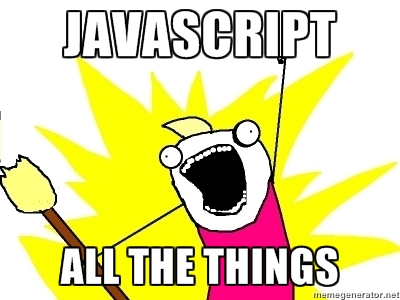

Why JavaScript?
Ubiqutous
Quirky
Fun!
Popular!
A humane programming language (it has flaws)
Where can we use JavaScript?



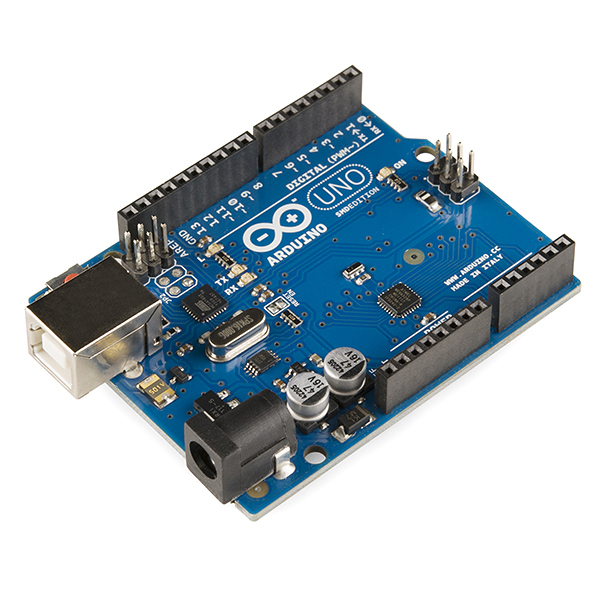


Any application that can be written in JavaScript, will eventually be written in JavaScript.
https://www.reddit.com/r/atwoodslaw/

Today's agenda
Something boring
Something necessary
Something interesting
Something awesome
Something surprising
Something bad
Today's agenda in detail
Boring: A brief history of JavaScript
Necessary: The type system
Interesting: Truthiness, Prototypes
Awesome: Closures, Currying
Surprising: Scoping, Concurrency
Bad: Global variables, Equals, and more
A brief history of JavaScript
(actually not that boring)
In the beginning...
In 1995, Netscape Navigator was the dominant web browser, but Microsoft was making inroads with Windows 95.
Netscape considered the web browser a new form of distributed OS, but it needed a lightweight scripting language.
They hired Brendan Eich in April 1995 and told him he had ten days to design a programming language.
Brendan created Mocha, later renamed to LiveScript, borrowing ideas from LISP, Smalltalk, Self and C.
Netscape Navigator 2.0 Beta was released in September 1995.
So why is it called JavaScript?
Java had just been released and was getting a lot of attention.
Netscape marketing changed the name from LiveScript to JavaScript in December 1995.
Netscape Navigator 2.0 with JavaScript support launched in March 1996.
Netscape delivered JavaScript to Ecma International for standardisation.
June 1997: First edition of ECMA-262 ECMAScript Language Specification.
ECMA-262: Uneven pace of change
| Year | Edition | Nickname |
|---|---|---|
| 1997 | First published | |
| 1998 | 2nd Edition | |
| 1999 | 3rd Edition | es3 |
| 2011 | 5.1 Edition | es5 |
| 2015 | ECMAScript 2015 (6th Edition) | es6 or ES2015 |
| 2016 | ECMAScript 2016 (7th Edition) | es7 or ES2016 |
| 2017 | ECMAScript 2017 (8th Edition) | es8 or ES2017 |
Today in the browser: es5

Today on the server: es7 (a.k.a. ES2016)

Tomorrow: es8 (a.k.a. ES2017)

The type system
(it's quite simple)
Types
Number
String
Boolean (true and false)
Null (null)
Undefined (undefined)
Object (a few types)
Number usage
let aNumber = 1;
let anotherNumber = 0.1;
1 / 0; >> Infinity
Math.sqrt(-1); >> NaN // not a number
0.1 + 0.2; >> 0.30000000000000004
JavaScript uses binary floating point arithmetic (IEEE 754).
String usage
let empty = '';
let helloWorld = "Hello World!";
let escaping = 'It\'s a glorious day!';
'abc' + "def"; >> 'abcdef'
1 + '2'; >> '12'
let name = 'Alice';
`Hello ${name}`; // es6 and later, using backtick (`), not quote (')
>> 'Hello Alice'
Objects
Arrays
Functions
Regular expressions
Objects (duh!)
Arrays
Create:
let empty = []; let numbers = [ 'zero', 'one' ];
Mutate:
numbers.push('two'); // [ 'zero', 'one', 'two' ]
numbers[0] = 'zilch'; // [ 'zilch', 'one', 'two' ]
Query:
numbers[1]; >> 'one' numbers.length; >> 3
Functions
Functions statement:
function hello(name) {
console.log(`Hello ${name}`);
};
Function expression:
let hello = function(name) {
console.log(`Hello ${name}`);
};
es6 introduced the arrow syntax:
let hello = (name) => console.log(`Hello ${name}`);
Functions as return types
function createFunction() {
return () => {
console.log('Hello World');
}
}
Functions as arguments
function map(numbersArray, callbackFunction) {
let result = [];
for (let number of numbersArray) {
result.push(callbackFunction(number));
};
return result;
};
Usage:
map([1, 2], (num) => { return num * num; );
>> [1, 4]
Objects
Containers of properties that are name/value pairs
Names can be any String
Values can be any expression
Mutable
Strings and Numbers are not objects (they are object-like but immutable)
Object syntax
Create:
let empty = {};
let simple = { 'name1': 'value1', 'name2': 'value2' };
Mutate:
simple['name1'] = 'changed'; simple['another name'] = 'another value';
Query:
simple['name']; // or simple.name; >> 'value'
Object literals
let myArray = [1, 2, 3];
let person = {
'firstName': 'John',
'lastName': 'Smith',
};
let nestedExample = {
'firstName': 'Jane',
'lastName': 'Smith',
'address': {
'country': 'Australia',
'city': 'Sydney'
},
'greeting': () => console.log('Hello World!')
}
Interesting parts
Truthiness, Prototypes
Truthy and falsy
All expressions are either truthy or falsy.
This can be used in conditional expressions:
if (someVariable) {
console.log('this only executes if someVariable is truthy');
}
Can be used as a simple check for null, undefined, NaN and more.
Falsy values
| Value | Type |
|---|---|
0 (zero) |
Number |
NaN (not a number) |
Number |
'' (empty string) |
String |
false |
Boolean |
null |
Object |
undefined |
Undefined |
Prototypes
All objects have a prototype attribute (also known as a prototype object), which is the object's "lineage"
Access an object's prototype using myobject.__proto__ (non-standard) or Object.getPrototypeOf(myobject) (standard in es6 and later)
let o = { x: 1 }; // o's prototype is Object.prototype
let a = [ 1, 2 ]; // a's prototype is Array.prototype
let f = () => {}; // f's prototype is Function.prototype
Prototype inheritance
A new object can inherit properties of an existing object.
Example: Arrays automatically inherit properties of the Array prototype object, such as length
let a = [ 1, 2 ]; a.length; // length is a property of Array.prototype >> 2
Prototypes form a chain to Object.prototype, and then null
a.__proto__;
>> [] // this is Array.prototype
a.__proto__.__proto__;
>> {} // this is Object.prototype
a.__proto__.__proto__.__proto__;
>> null
Prototype inheritance using new
function Shape(name) { // constructor function
this.name = name;
}
Shape.prototype.describe = function() {
console.log(`I am a ${this.name}`);
}
let shape = new Shape('rectangle');
shape.color = 'red';
shape.describe();
>> 'I am a rectangle'
shape.__proto__
>> Shape { describe: [Function] }
shape.__proto__.__proto__
>> {} // this is Object.prototype
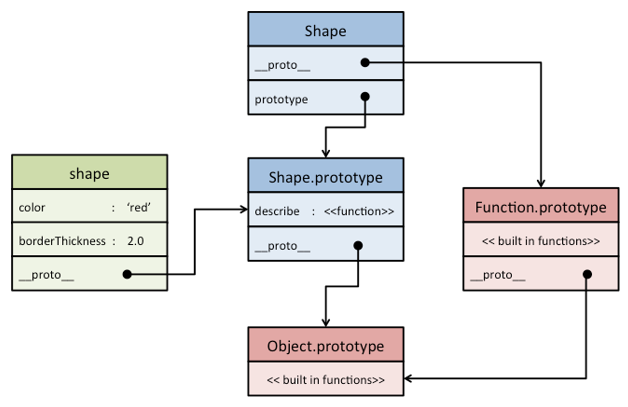
Prototypes vs classes
function Person(name) {
this.name = name;
}
Person.prototype.getName = function() {
return this.name;
}
class Person { // es6 and later only
constructor(name) {
this.name = name;
}
getName() {
return this.name;
}
}
Inheritance using Object.create()
The first argument to Object.create() will be the prototype object of the newly created object.
let parent = {
'name': 'Alice',
'greet': () => console.log('Hello')
};
let child = Object.create(parent);
child.name = 'Bob';
child.greet();
>> 'Hello'
child.name;
>> 'Bob'
Object.getPrototypeOf(child);
>> { name: 'Alice', greet: [Function: greet] }
Awesome parts
Closures, Currying
Closures
Inner functions can access variables of the functions they are defined within.
let outer = () => {
let outerVariable = 'hello';
return {
inner: () => { console.log(outerVariable); }
};
};
// outerVariable is no longer in scope
outer().inner();
>> 'hello'
Function closures as pseudo-classes
let counter = () => {
let value = 0;
return {
getValue: () => { return value; },
increment: () => { value++; }
};
}
let myCounter = counter(); // create an object
Encapsulation: value can't be directly manipulated.
Currying
Create a new function by supplying some arguments of an another function.
function describe(thing, adjective) {
console.log(`{thing} is ${adjective}`);
}
function describeWithCurrying(adjective) {
return (thing) => console.log(`${thing} is ${adjective}`);
}
let isAwesome = describeWithCurrying('awesome');
let isEvenBetter = describeWithCurrying('even better');
isAwesome('Melbourne');
isEvenBetter('Sydney');
Surprising parts
Scoping, Concurrency
Brief detour: Variable declarations
var was the only way to create variables prior to es6
es6/ES2015 introduced two new keywords:
letfor variables that can be reassignedconstfor variables that can't be reassigned
If you're writing es6 or later, don't use var
Why?
vardeclarations are hoisted to the top of the functionletandconstvariables are block scoped
Scoping with var
JavaScript uses C's block syntax (curly braces {}), but there's no block scope for var.
var has only two scopes: global and function.
A variable defined without var is global. Never do this!
A variable defined using var outside any function is global.
A variable defined in a function only exists in that function.
var vs let
() => {
if (condition) {
var myString = 'hello';
}
// myString = 'hello'
}
// myString is no longer in scope
() => {
if (condition) {
let myString = 'hello';
}
// myString is no longer in scope
}
Scoping test with var
let first = 0;
let scopeTest = () => {
let first = 1;
console.log(`first=${first}`);
if (true) {
var second = 2;
}
console.log(`second=${second}`);
};
scopeTest();
console.log(`first=${first}`);
console.log(`second=${second}`);
>> first=1 second=2 first=0 ReferenceError: second is not defined
Concurrency: the event loop
while (queue.waitForEventMessage()) {
queue.processNextEventMessage();
}
Each event message is processed completely before any other message is processed.
No multi-threading support, as in C, Java, others.
How are event messages added to the queue?
- In a browser: When a user interface event happens and an event listener is is attached.
- Elsewhere:
setTimeout()and friends
Event loop test
setTimeout(callback, delayMillis)
Adds callback as a message to the event queue, with a delay.
(function() {
for (var i = 1; i <= 3; i++) {
setTimeout(function() {console.log(i); }, 0);
}
})();
Solution:
>> 4 4 4
Event loop test using let
setTimeout(callback, delayMillis)
Adds callback as a message to the event queue, with a delay.
(function() {
for (let i = 1; i <= 3; i++) {
setTimeout(() => console.log(i), 0);
}
})();
Solution:
>> 1 2 3
Bad parts
Global variables, Equals, and more
Global variables
It's far too easy to create global variables!
function myFunction() {
global1 = 1;
var nonGlobal = 'I only exist inside myFunction';
}
var global2 = 2;
window.global3 = 3;
global1 is global because we forgot let/const/var
global2 is global because we declared it as a var outside of a function or object
global3 is global because we added it to the global web browser window object
Equals
JavaScript has both == and === (as well as != and !==)
== performs type coercion when the arguments are not of the same type, using strange rules:
0 == '' // true '0' == '' // true '' == '0' // false false == '0' // true null == undefined // true ' \t\r\n ' == 0 // true
Lesson: Use === and !==
Where do I start?
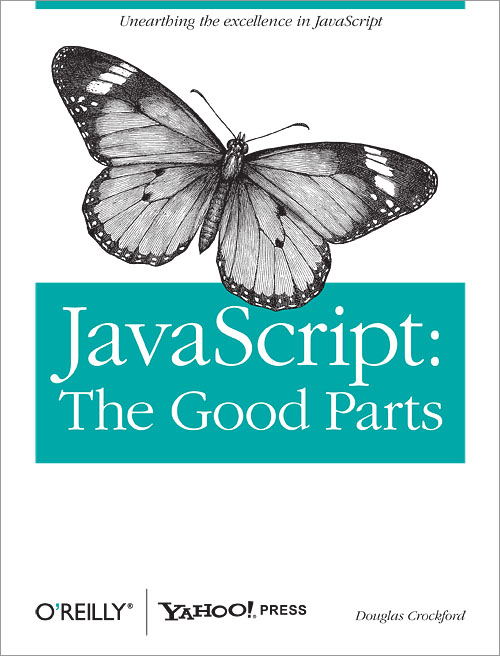
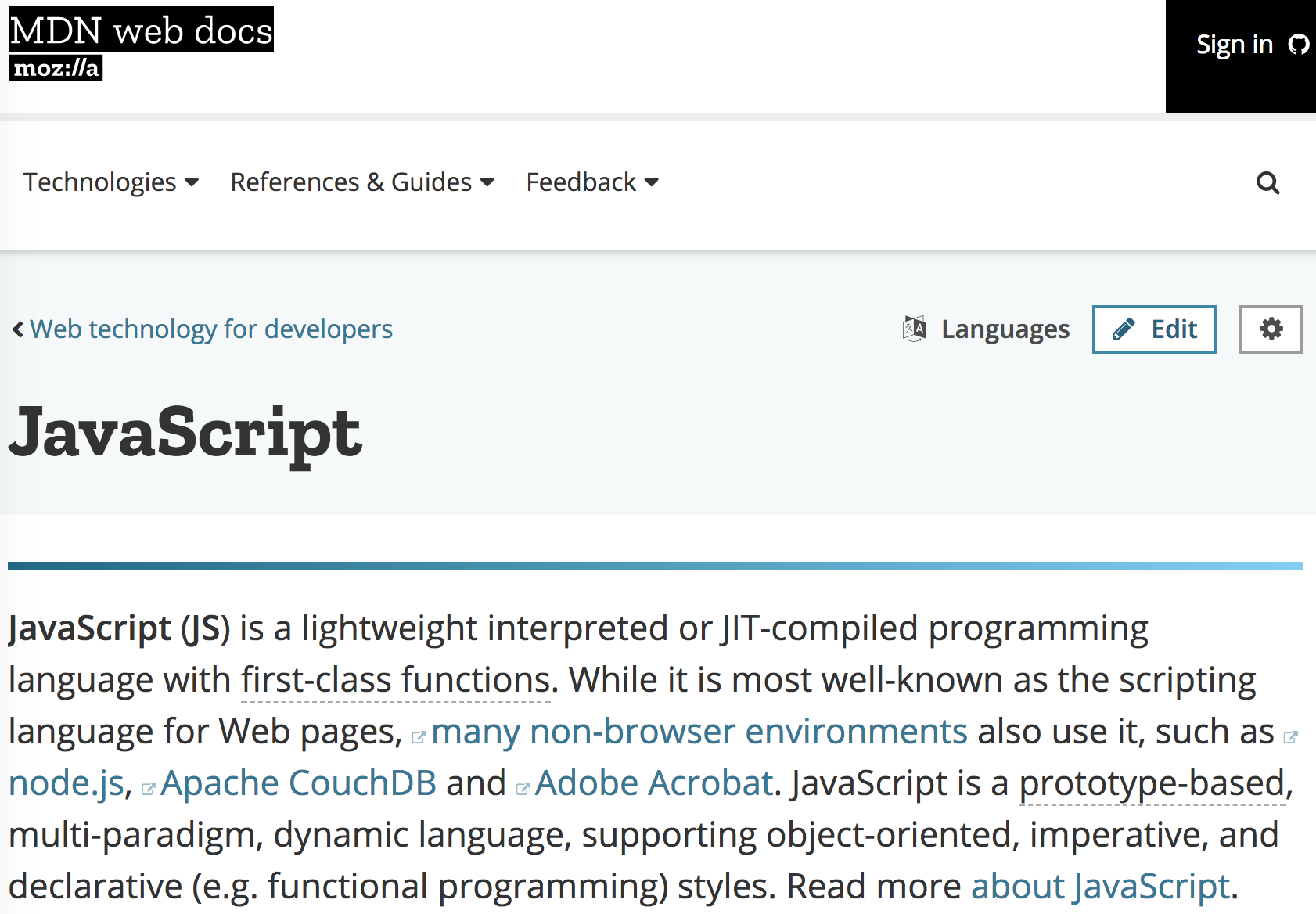

Thank you!
References
- Douglas Crockford: JavaScript: The Good Parts, O'Reilly
- es5: ECMAScript Language Specification, 5.1 Edition
- es6: ECMAScript 2015 Language Specification
- es7: ECMAScript 2016 Language Specification
- Mozilla Developer Network: JavaScript
- Trevor Burnham: The Origin of Javascript with Brendan Eich, JavaScript Jabber, Episode 124, 3 Sept 2014
- Charles Severance: JavaScript: Designing a Language in 10 Days, IEEE Computer, Feb 2012
- Paul Krill: JavaScript creator ponders past, future, 23 June 2008